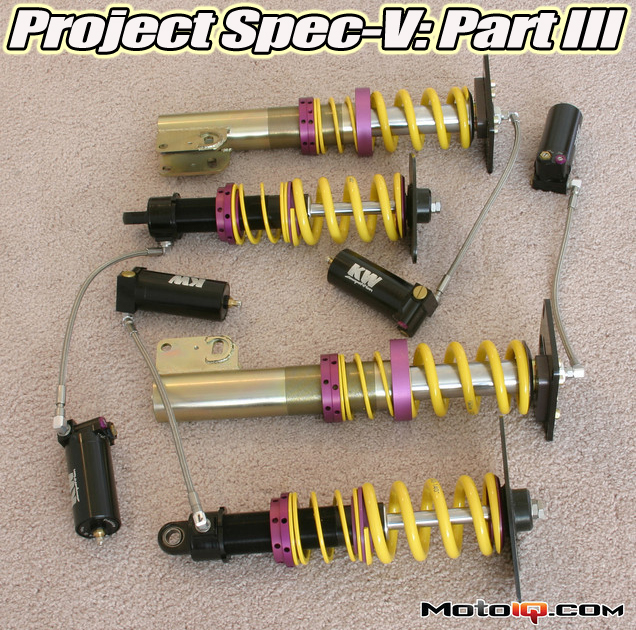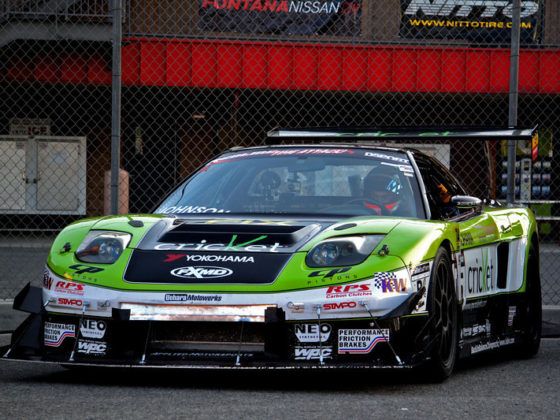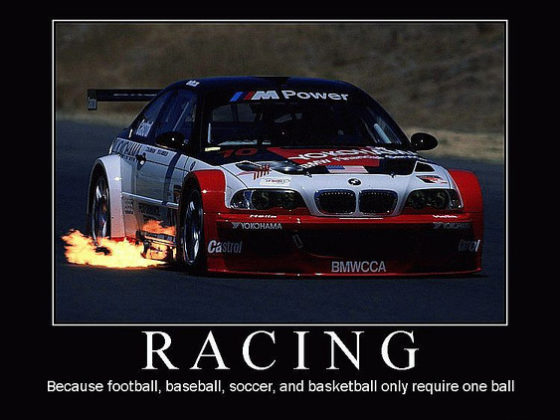,
 |
| We mounted the rear remote reservoirs to the frame rails where they could easily be reached quickly for adjustment. We used KW’s supplied plastic cradle. |
The KW shocks feature remote reservoirs. A floating piston in the remote reservoir separates the shock oil from the 300 psi nitrogen gas. The gas pressure is also adjustable via the Schrader valve on the end of the remote canister. The canister pressure can be used as an adjustment to affect the amount of force it takes to move the shaft initially, much like spring preload. It can also be used to affect ride height to a small extent. The remotes give a place for the extra compression damping adjuster valves to be installed. Since the remote reservoir contains the floating separator piston and the gas chamber, the shock can be made shorter while retaining full wheel travel, critical in McPherson strut cars like our Sentra where space is at a premium.
 |
| The front reservoirs were mounted to the top of the firewall for ease of accessibility. |
The front shock is an inverted shaft design. An inverted shaft means that the shocks large diameter body acts like a secondary shock shaft as the entire shock is mounted upside down in the strut tube. This is much stronger and more ridged than a conventional shock with a skinny shaft because of the extra bearing area, overlap and support. One disadvantage of an inverted shaft is more friction due to the large diameter shaft/body against another whole set of additional bushings and seals. KW solves this problem by using nearly friction free linear ball bearings in the shock housing instead of bushings. This should give a smooth friction free ride.
 |
| An inverted shaft strut has a large diameter and an additional set of bearings with lots of overlap to give beefy flex free support. |
The front strut tube has a lock plate on its spindle mount for rough adjustment of camber. Different lockplates can be selected at half degree increments to get the camber roughly into place with no risk of slippage. By adjusting things here and on top of the shock with the camber plate, the kingpin inclination angle can be adjusted. This is an unusual adjustment and we plan on using it to our advantage.
 |
| Ground Controls camber caster plates can move in two directions to allow adjustment of both camber and caster. |
We used Ground Control Inc camber/caster plates as they allow adjustment in two axis of both camber and caster angles, something critical for any serious chassis setup. The Ground Control plates have a unique and vastly superior design where the load of supporting the vehicles weight is taken off the spherical bearing that guides the shock shaft and placed instead on a roller thrust bearing on a pivoting conical seat that can better deal with this sort of load. This wears a lot better and assures friction free articulation of the top mount. The GC plates are machined from aircraft aluminum alloy and use high quality bearings for a long service life. The bearing eliminate the stock strut mounts rubber bushing which assures every bit of wheel movement will be controlled by the damper and that no unwanted deflection will cause a loss of steering accuracy or an unwanted change of geometry.
 |
| These lockplates allow rough adjustment of the camber in half degree increments. This allows the king pin angle to be adjusted for control of the scrub radius and self aligning action of the steering. |



